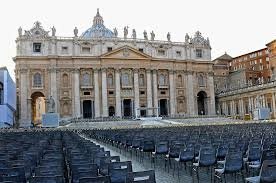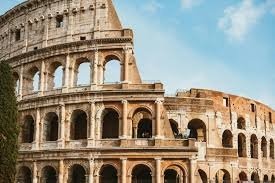The title of the largest cathedral in Italy—and indeed in the world—belongs to St. Peter’s Basilica in Vatican City, Rome. Although Vatican City is an independent city-state, it is located within Rome and closely tied to Italy’s cultural and spiritual heritage. St. Peter’s Basilica is not only the largest church in terms of interior space but also one of the most important religious and architectural landmarks in history.
The origins of St. Peter’s Basilica date back to the 4th century, when Emperor Constantine, the first Christian emperor of Rome, commissioned a church on the site believed to be the burial place of Saint Peter, one of the apostles of Jesus and the first pope. The original structure stood for more than a thousand years until Pope Julius II decided to replace it in the early 16th century. The new basilica, constructed over more than a century, involved some of the greatest artists and architects of the Renaissance, including Bramante, Michelangelo, Raphael, and Bernini.
Covering an interior area of about 15,160 square meters (162,000 square feet) and with a capacity of over 60,000 people, St. Peter’s Basilica is unmatched in scale. Its dome, designed by Michelangelo, rises to a height of 136 meters (448 feet), dominating the skyline of Rome and serving as a masterpiece of Renaissance architecture. The dome remains one of the most recognizable symbols of Christianity worldwide and has inspired countless other domes across Europe and beyond.

The basilica’s interior is equally breathtaking. It features soaring ceilings, vast marble columns, elaborate mosaics, and numerous chapels. Among its most notable treasures is Michelangelo’s Pietà, a marble sculpture depicting the Virgin Mary holding the body of Christ after the Crucifixion. Bernini’s magnificent Baldachin, a bronze canopy over the papal altar, stands at the very heart of the basilica. Beneath the altar lies the confessio, a shrine that marks the traditional tomb of Saint Peter, drawing millions of pilgrims each year.
St. Peter’s Basilica is not technically a cathedral—since it is not the seat of a bishop (that honor goes to the Archbasilica of St. John Lateran in Rome)—but it is widely regarded as the greatest of all Christian churches. It serves as the principal church of the Pope, the spiritual leader of the Roman Catholic Church, and the site of major liturgical ceremonies, including papal inaugurations, canonizations, and Easter celebrations.
Beyond its religious significance, the basilica is also an enduring symbol of art, culture, and history. Its construction reflects the power and influence of the Renaissance Papacy and showcases the genius of some of the greatest minds in art and architecture. Today, it is both a place of worship and one of the most visited tourist attractions in the world, drawing millions of pilgrims and travelers annually.
In conclusion, St. Peter’s Basilica in Vatican City is the largest cathedral-like church in Italy and the world. Its immense size, breathtaking design, spiritual significance, and historical importance make it one of humanity’s greatest architectural and cultural achievements.




